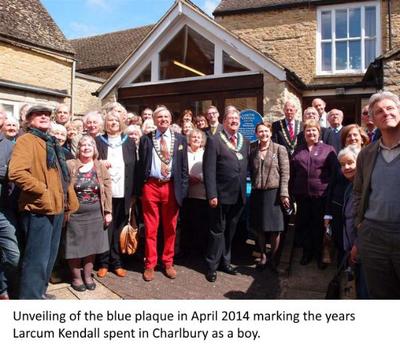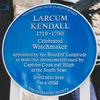
The History of Charlbury through ... the life of Larcum Kendall
Judy Dod for Charlbury Museum
A blue plaque in Market Street marks Larcum Kendall’s links with Charlbury. But who was he and how was he connected to Captain Cook and the mutiny of the Bounty?
Born into a Quaker family in 1719, Larcum may have got his interest in clockmaking from Thomas Gilkes, who began making clocks in Charlbury about 1725. Aged 16, Larcum was apprenticed to John Jefferys, a distinguished watchmaker in London, and spent seven years learning his trade before setting up his own London business in 1742.
In an age of great sea exploration, sailors needed an accurate way of calculating their position at sea. They calculated their latitude by measuring the angle of the sun or looking at the stars but had no reliable way of measuring longitude. As a result ships often made long detours, running out of food and suffering disastrous shipwrecks.
In 1714 the Government set up the Board of Longitude, offering £20,000 (worth over £1 million today) to whoever could make an accurate timepiece to help sailors calculate their longitude. Clockmaker John Harrison eventually made a clock (H4) that met their strict criteria over several sea trials. But Harrison had to prove it was not a ‘one-off’ and could be replicated. For this task, the Board chose Larcum Kendall.
He completed his copy (K1) in January 1770. It passed its first tests with flying colours and was sent with Captain Cook on his second voyage to the South Pacific. Cook was away three years. His ship the Resolution was the first to cross the Antarctic Circle, then headed for New Zealand, exploring Pacific islands including Tahiti, returning to England via Cape Horn. Cook reported: “Mr Kendall’s watch has exceeded the expectations of its most zealous advocate, and has been our faithful guide through all the vicissitudes of climates.” During the 30 years it was in use, K1 kept accurate time in all climates, travelling several times round the world.
Kendall made two simplified versions which had their own adventures. In 1787 one went on the Bounty with Lieutenant Bligh to the South Pacific. After the crew mutinied, it was taken to Pitcairn Island by the mutineers, then bought in 1808 by an American whaler. Stolen and surfacing in Chile, it was sold to a Spanish muleteer for three doubloons. Eventually in 1840 it was purchased by the Royal Navy. His other replica, K3, went on Captain Cook’s last voyage aboard the Discovery, and later went to Newfoundland, with Captain Vancouver along the Pacific coast of North America, to Australia and China.
Larcum Kendall died in London in 1790. Though little is known of his life, he made a major contribution to the safety of sailors. Two of his chronometers can be seen at the Royal Observatory in Greenwich.




